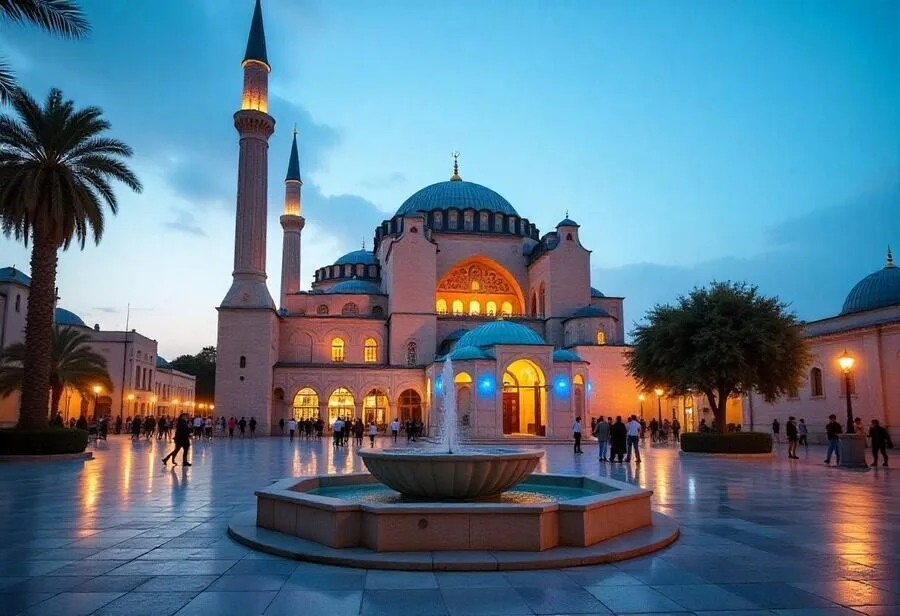Published on
August 15, 2025

Oman is attracting travellers from across the globe to Wakan Village, a high-altitude haven where dramatic mountain scenery meets centuries-old traditions. Visitors are drawn not only by its unspoiled natural beauty but also by its rich cultural landmarks, from ancient terraces to historic mosques, and the chance to experience daily life in a community that has preserved its heritage for generations. This rare combination of nature, history, and authenticity has made Wakan a standout destination in the country’s growing tourism landscape.
Tucked high in the dramatic landscapes of Wadi Mistal in the Wilayat of Nakhal, Wakan Village is emerging as one of Oman’s most remarkable travel gems. Set within the South Al Batinah Governorate, this elevated community blends breathtaking mountain scenery, refreshing year-round temperatures, and time-honoured traditions, offering visitors an escape that feels far removed from the pace of the country’s bustling tourist centres.
Between January and July 2025, Wakan Village received 27,428 visitors, marking a significant rise from the 24,093 who came during the same months in 2024. This consistent growth shows how the village’s rare combination of natural beauty, cultural heritage, and adventurous activities continues to attract both local and international tourists.
Rising Visitor Numbers Driven by Mountain Appeal
Perched approximately 1,500 meters above sea level on the slopes of the Wadi Mistal mountains, Wakan offers a climate unlike most of Oman. Summers here are pleasantly mild, while winters bring crisp, cool air — a stark contrast to the intense heat experienced in much of the country. This refreshing environment makes the village a popular refuge during the warmer months and supports thriving farmlands year-round.
Between January and July this year, Wakan attracted over three thousand more visitors than the same period last year, showing that word of its charm is spreading fast. Many visitors are drawn to the tranquil mountain guesthouses, scenic hiking routes, and the chance to immerse themselves in seasonal agricultural activities.
Seasonal Harvests and Agricultural Heritage
Agriculture is at the heart of Wakan’s identity, and its seasonal harvests are a major draw for visitors. The year’s cycle begins in June, when apricot trees burst into fruit. July follows with the ripening of peaches, figs, and pomegranates, while August brings a variety of grapes, including Al-Maqdmani, Al-Malasi, and sour grape varieties unique to the region.
These crops are sustained through the ancient falaj irrigation system, a network of water channels that have been carefully maintained for generations. This system not only supports farming but also reflects the village’s deep-rooted commitment to preserving traditional methods. Visitors can walk through terraced farms, interact with local growers, and in some cases even participate in harvest activities — an experience that blends tourism with cultural exchange.
Adding to the village’s offerings, the newly opened “View Wakan” café has quickly become a focal point for visitors. As the third café in the village, it provides scenic spots to enjoy refreshments while overlooking the valley. On weekends and public holidays, the café becomes a lively gathering space, enhancing the social side of the Wakan experience.
Cultural Landmarks and Historic Charm
While Wakan’s climate and natural setting are strong attractions, its cultural and historical assets are equally compelling. Visitors can explore an ancient mosque, wander through narrow lanes lined with traditional houses, and view agricultural terraces carved into steep mountain slopes. These terraces are a testament to the skill and persistence of generations who learned to work in harmony with the challenging terrain.
Walking paths around the village reveal a landscape dotted with pomegranate trees and small farm plots. For the community of roughly 162 residents, these lands provide both livelihood and heritage. Hiking and mountain biking trails starting from Wakan extend into the Western Hajar Mountains, offering sweeping views and opportunities to explore remote, pristine areas that highlight Oman’s natural diversity.
Adventure and Accessibility
Reaching Wakan is part of the adventure. The village is accessible by mountain roads that typically require a four-wheel-drive vehicle, adding an element of excitement for travellers who enjoy venturing beyond typical tourist routes. The journey itself offers panoramic views of the mountains, valleys, and distant settlements, setting the tone for the immersive experience that awaits.
Once in Wakan, visitors can choose from gentle walks around the village to more demanding treks into the surrounding highlands. Mountain biking is becoming increasingly popular here, with marked routes offering both challenge and reward for enthusiasts.
Sustainability and Year-Round Tourism
Wakan is emerging as one of Oman’s leading examples of sustainable tourism. Its elevated location offers a refreshing retreat from the intense summer heat, while its carefully preserved heritage allows tourism to grow without disrupting the community’s traditions. By embracing eco-conscious practices, restricting large-scale development, and creating visitor experiences that celebrate both cultural and natural beauty, the village protects its character and remains true to its roots.
This balance of environmental care and cultural respect attracts a specific type of visitor — those who value nature, tradition, and unspoiled beauty over commercial attractions. Photographers, birdwatchers, and eco-travellers in particular find Wakan to be a rewarding destination.
An Emerging Jewel in Oman’s Tourism Landscape
The combination of rising visitor numbers, new amenities, and preserved traditions positions Wakan as one of Oman’s most promising mountain retreats. Its cool climate, agricultural heritage, and outdoor adventure opportunities appeal to a broad range of travellers. Whether guests come to hike, taste fresh fruit, or simply relax in a serene setting, Wakan offers a genuine alternative to the country’s coastal and desert attractions.
As tourism in Oman continues to diversify, destinations like Wakan show how smaller communities can thrive by staying true to their roots while welcoming the world. The village’s growth demonstrates that travellers are increasingly seeking experiences that connect them with nature, history, and local culture in a meaningful way.
Oman is drawing global travellers to Wakan Village for its rare mix of unspoiled mountain landscapes, historic landmarks, and authentic cultural experiences preserved for generations.
With its seasonal harvests, historic terraces, panoramic trails, and commitment to sustainability, Wakan is more than just a place to visit — it is a destination to experience, savour, and remember. For those willing to make the journey into the Western Hajar Mountains, it remains one of the country’s most rewarding hidden gems.







